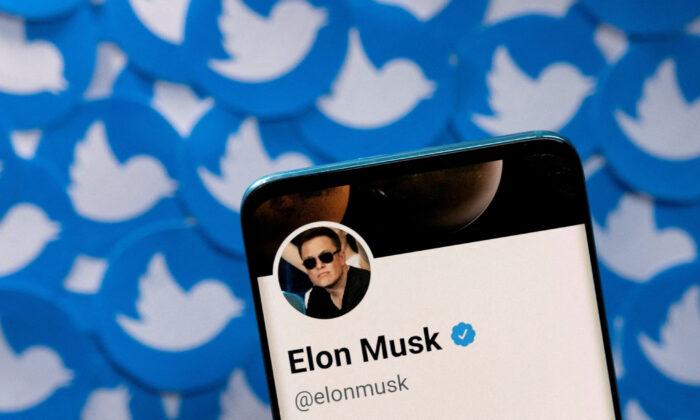Commentary
The Bible says, “Thou shall not covet,” but for years I secretly coveted something many had: Twitter’s blue check mark.
I know it sounds silly, but I longed to be verified. When I started Twitter, I didn’t care; but at some point I realized verification would boost my “personal brand,” which would lead to more engagement and more followers.
So I jumped through the hoops and applied for verification. Nothing happened.
It wasn’t that I was denied. Twitter just refused to respond. This was infuriating. Am I not the customer? What kind of business practice is this?
The worst part was it made me want verification more. I yearned for that stupid blue check mark. I applied again. And again. Nothing. Sometimes I’d feel a palpable sense of rejection, as if I’d gone on a date with a beautiful woman and she got up and left before dinner after sizing me up.
I was able to laugh off these feelings, but make no mistake: I wanted verification. In fact, if you’d asked me in 2021, I probably would have paid $1,000 for it.
Selling Exclusivity
Today if you asked me how much I’d pay for a blue check mark, my answer would be different.Not much.
So what’s changed? Why is a blue check mark (
which I do pay for) worth less to me today than it was worth a couple years ago? Basic economics holds some answers, but first let’s look at what has changed since Elon Musk bought Twitter.
First, anyone can now get verified under Twitter Blue, an opt-in monthly subscription. As my experience shows, this wasn’t always the case.
Prior to Twitter Blue, verification was an exclusive club. Though it didn’t start out that way—verification began as a way to just make sure you were human—eventually, Twitter decided you had to be “a somebody” to get in. Professional athletes and authors got verified. So did journalists, especially those in legacy media. Politicians, authors, and radio show hosts, too.
Verification offered two important commodities: status and exclusivity. How much is that worth? To some people nothing. But to others, it offers a great deal. Twitter employees reportedly were selling blue check marks for
$15,000 a pop behind the scenes.
That was then. What is the value of verification today? Again, that depends. But many people are refusing to pay $8 a month. Bette Midler was trending on Twitter after
she complained about her verification being removed. Others have since decided not to pony up.
“I actually was paying for Twitter Blue until this whole hostage blue check thing happened and I cancelled it because of that,”
said CNN commentator Adam Kinzinger.
Now, some could point out Kinzinger and Midler are only refusing to pay the $8/month because they don’t like what Musk is doing with the platform, and they’d have a point. After all, it’s not as if Midler can’t afford $8/month. She just doesn’t want to pay. By making Twitter more egalitarian, Musk alienated the self-styled egalitarians.
This shunning of verification is a reflection of the very real diminishing value of Twitter verification.
Economics: Value and Scarcity
What is the true value of Twitter Blue? It’s hard to say.Remember, value isn’t determined by how useful something is or how much labor is put into it.
Value is subjective, and it varies from person to person. Ultimately a product’s value is determined by what someone is willing to pay, and that changes based on all kinds of variables.
That’s why prices are constantly changing—because information is constantly changing. Take a different social media company, Rumble. Shares right now are trading at around $9, but when Joe Trader bought them six months ago, they were trading at $16. What’s changed? All kinds of things, more than we can list.
The same goes for Twitter verification, but some of these changes are easier to identify, particularly in the realm of the product’s supply.
When the supply of a commodity lags behind rising demand, prices go up (this is called
scarcity pricing). This difference between supply and demand explains why people were paying big bucks to get verified. Demand was high, supply was low. This is no longer the case. Any Tom, Dick, or Harry can get verified today. Supply is no longer limited. And as a basic supply-demand curve shows, as supply increases the quantity of a good demanded increases but the willingness to pay for each quantity remains the same. This drives prices down.
This was always baked into Musk’s Twitter Blue model, of course. After all, he wasn’t asking users to pay $15,000 for verification, just $8/month. This might seem like a pretty good deal—at first.
The problem is, the value of the product has also changed. By flooding the system with blue check marks, Musk effectively destroyed the primary value proposition of the blue checkmark:
status. That’s ancient history. Having a blue checkmark is no longer exclusive, and that was the main value of a blue checkmark. In fact, many celebrities are now
mocking Twitter Blue and chiding Elon Musk for ponying up to cover the cost for celebrities like Lebron James and Stephen King.
That’s a question consumers will decide.
Views expressed in this article are opinions of the author and do not necessarily reflect the views of The Epoch Times.





